|
I post a lot on my biz page about my various offerings and trainings for yoga teachers but I wanted to remind you that I am first and foremost a yoga therapist and I specialize in working with cancer patients. If you yourself, or someone you know has been diagnosed with cancer, I offer private yoga therapy session on Zoom or in person in the Triangle area of NC. We meet, you tell me a bit about your diagnosis, your treatment plan, and any symptoms or side effects you are experiencing, and I offer you a simple gentle home practice customized specifically to your needs. I also each a FREE Healing Yoga for Cancer class on Tuesdays from 12:00-1:00 pm each week that is sponsored by the NorCal CarciNET Support Group. Patients, survivors and even care-givers are welcome to attend, no matter how long it as been since you went through your cancer treatment. FREQUENTLY ASKED QUESTIONS:
Yoga seems scary from what I see in the media, is this what you teach? No, not even a little bit. What I offer is very very different. It includes gentle movements from a chair, lying on the floor, and sometimes standing; lots of reminders to only move in a pain-free range of motion; conscious breathing, hand gestures, and relaxation techniques that will help you mind stop racing. I have never stepped foot on a yoga mat, will this work for me? Absolutely! In fact, I have seen the most positive changes in clients who are brand new to yoga. I have decades of experience working with brand new beginners who also happen to be newly diagnosed cancer patients. How does yoga help cancer patients? Yoga can get you to slow down and start to focus internally in a way that is not self-deprecating or negative. You move your body gently which gets your lymphatic system mobilized to boost immunity, and those same gentle movements can help to relieve joint pain. There are also specific practices that can help insomnia, anxiety, depression, neuropathy, digestive distress, lymphedema, and cognitive fog. I was just diagnosed, will yoga help me? Yes, newly diagnosed patients often are faced with a thousand decisions about their treatment and end up overwhelmed and anxious. There are so many simple yogic techniques that can help you to calm down, be present, and face your diagnosis and treatment just a little bit more from your center. I am a 20-year cancer survivor, can I still come to your free yoga class on Tuesdays? I would love for you to come to the free class and become a part of our online community. If that time does not suit you, I also post the class to the private Facebook group Healing Yoga for Cancer and you can ask to join that group and watch over a year of our classes. We rotate between Mat Yoga (reclining, sitting, kneeling, and standing poses), Chair Yoga (either seated in chair or using chair for balance), Yoga Nidra (reclining guided relaxation), Restorative Yoga (using pillows and blankets to rest in longer-held poses that open the body gently which can be done on the bed or floor), and Subtle Practice which uses breathing, mudra, and sound practices to create calm.
0 Comments
8/3/2021 My Journey to Self-AcceptanceIn this talk, I explain all the steps I took from my conservative Presbyterian upbringing to being a thought leader in the yoga world - and the many stops along the way. Recorded as part of the Spiritual Odyssey series at the Eno River Unitarian Universalist Fellowship, Durham, NC.
Cheryl Fenner Brown, C-IAYT, E-RYT 500 This article also appeared in the Yoga U Online Wellness Blog, August 2019 Your nervous system is made up of two parts that relay information between your brain and the rest of your body, the central nervous system (brain and spinal cord), and the peripheral nervous system (all other nerves. Neuropathy occurs when these nerves are damaged. Peripheral neuropathy, resulting from damage to nerves outside of the brain and spinal cord, can cause changes in sensation such as tingling, pain, numbness and weakness especially prevalent in the arms, legs, hands and feet. When it occurs in the lower body, there may be issues with constipation or balance when proprioceptive feedback from the lower extremities is interrupted. Symptoms may be different from person to person depending on which nerves are damaged and the severity. Why Do Cancer Patients Get Neuropathy? Unfortunately, neuropathy can be caused by all allopathic cancer treatments and unfortunately cannot be cured. Surgery causes neuropathy when nerves are disturbed and from the resulting inflammation. Radiation causes neuropathy when treatment damages nerves; neuropathy of the hands and arms is common in breast cancer patients who undergo radiation. Certain chemotherapy drugs may cause neuropathy, especially at higher doses. And the cancer tumor itself may press on nerves causing similar nerve damage and neural symptoms. When sensory nerves are affected - those that control your sense of touch - you may feel tightness, discomfort when things touch your skin, numbness, an inability to feel temperature changes, tingling, burning, electric sensations, or pain in the hands in feet. You may even have challenges knowing where your hands or feet are in space (proprioception) which may cause difficulty grasping things or with your balance. When motor nerves are affected - those that relay information between the brain and body - you may have trouble walking because the feet and legs feel weak or heavy. Not only balance, but coordination is compromised, and everyday activities such as dressing or using your phone may be impaired. And many patients report that symptoms continue to worsen months or even years after treatment ends. When autonomic nerves are affected - those that govern bodily functions - you may have trouble with blood pressure and body temperature regulation. Other issues may arise with swallowing and digesting food, or when urinating or defecating or with sexual function. It is important to inform your oncologist if you begin to experience any of these side-effects. Yoga and Neuropathy The good news is that there are many ways that yoga can reduce the suffering associated with neuropathy. The relaxation effects of breathing and regular yoga practice can help you learn to handle the distraction and discomfort of neuropathy. And the movement aspect of the practice can help to reduce the uncomfortable sensations you may be experiencing. There are also mudras that help to circulate the vital force of the body (prana) and stimulate the extremities. In fact, several clinical trials are currently underway to explore the effectiveness of yoga to treat neuropathy in breast cancer patients. Yoga Practice Tips
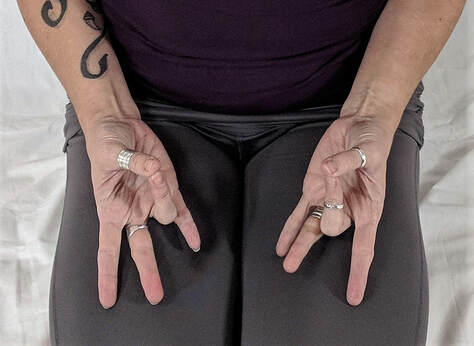 Repeat Intention with Vyan Vayu Mudra Begin in a comfortable seated position with your hands on your lap. With your left hand, touch the tips of your thumb and middle finger together while extending your other fingers. With your right hand, touch the tips of your thumb and ring fingers together while extending your other fingers. Rest the backs of your hands on your thighs in Vyan Vayu Mudra. This gesture improves circulation to the extremities, enhances body awareness and promotes the flow of vital energy through the body. 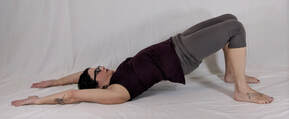 Bridge Flow (Setu Bandha Vinyasa) This reclining bridge flow is a simple series of movements that may help to increase pranic flow and circulation. It is best done on the floor but can also be done on a bed.
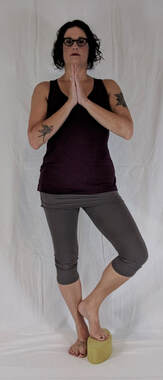 Tree Pose (Vrksasana) This common standing pose is helpful for building body awareness, stability and balance.
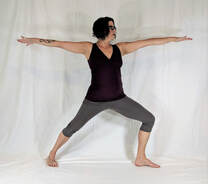 Warrior II Flow (Virabhadrasana II Vinyasa) Moving through variations of Warrior II (Virabhadrasana II) can also help with stability, proprioception, strength and balance.
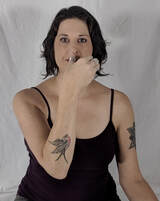 Alternate Nostril Breathing Breathing alternately into the right and left nostrils can help to calm the nervous system which might make neuropathy symptoms seem less intense. It also increases communication between the right and left hemispheres of the brain to stimulate the central nervous system.
 Body Scan The body scan, or rotation of consciousness, is a guided sensory journey through the different parts of the body. It increases body awareness, eliminates mental chatter, and engages the witness consciousness. You engage as many channels of communication as possible to keep the mind focused - auditory by listening to the teacher’s voice, speech by repeating the body part, visual by imagining the part externally, proprioceptive by feeling the part internally, kinesthetic by sensing movement from one place to the next. The scan connects the origin of the motor nerves in the brain to the ending of the nerves in each part. As you go through the rotation of consciousness, you are activating parts of your brain associated with parts of your body which in effect, relaxes the mind by relaxing the body.
References
|
Index:Archives:
September 2022
I attend Cheryl's class regularly and feel that my practice has improved immensely over the past few years due to her expert coaching. Her teaching style is clear and compassionate and her previous experience in teaching adults is evident in her organized approach and easy to understand instructions. I also appreciate that Cheryl not only teaches us about how to correctly position ourselves, but also touches on many aspects of yoga philosophy, which in turn has deepened my personal practice and heightened my awareness of the connection between mind and body, breath and relaxation. |

 RSS Feed
RSS Feed
